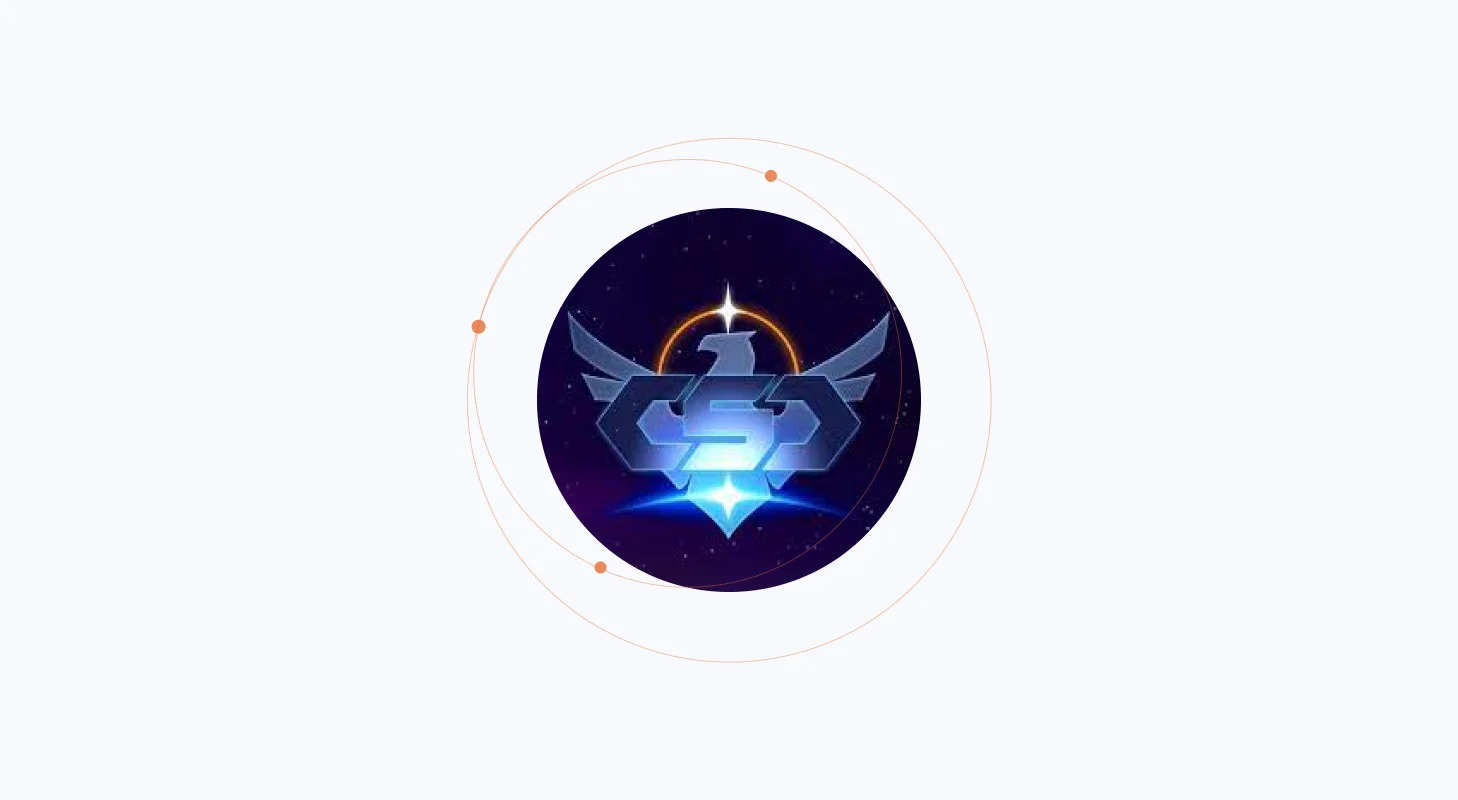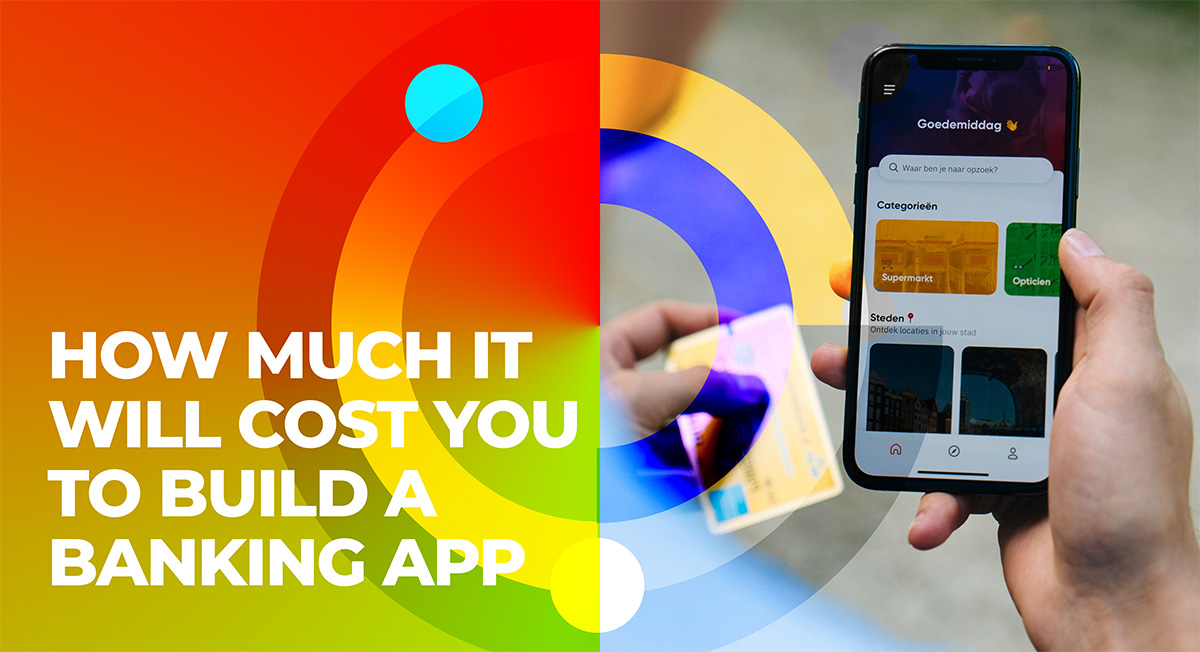

Finance
How Much Does It Cost To Build A Blockchain
Published: October 23, 2023
Discover the cost of building a blockchain in the finance industry and learn how it can revolutionize your business operations. Explore pricing options now!
(Many of the links in this article redirect to a specific reviewed product. Your purchase of these products through affiliate links helps to generate commission for LiveWell, at no extra cost. Learn more)
Table of Contents
Introduction
Blockchain technology has emerged as a revolutionary innovation in recent years, transforming various industries and offering immense potential for secure and transparent transactions. As the demand for blockchain solutions continues to grow, many businesses are considering building their own blockchain networks. However, one crucial factor that often comes into play is the cost involved in building a blockchain.
While it’s difficult to provide an exact figure for the cost of building a blockchain, there are several key factors that can significantly influence the overall expenses. From development and programming costs to infrastructure, security, testing, deployment, and ongoing maintenance, each stage of the blockchain development process comes with its own set of expenses.
In this article, we will explore the various factors that can influence the cost of building a blockchain, providing insights into the different components involved and offering a better understanding of the financial commitment required.
By gaining a comprehensive understanding of the cost factors, businesses can make informed decisions and allocate resources effectively to ensure a successful and cost-efficient blockchain implementation.
Factors Influencing the Cost of Building a Blockchain
Building a blockchain involves a series of complex processes and components, and the cost can vary greatly depending on various factors. Here are some key factors that influence the cost of building a blockchain:
- Functionality and Complexity: The level of functionality and complexity required in a blockchain solution directly impacts the cost. Basic blockchain implementations, such as simple transactional ledgers, are typically less expensive compared to more complex solutions that involve smart contracts, decentralized applications (dApps), or integration with existing systems.
- Development and Programming: The development and programming stage constitutes a significant portion of the overall cost. Skilled blockchain developers who possess expertise in blockchain frameworks, programming languages (e.g., Solidity), and smart contract development are in high demand. The complexity of the project and the time required for development will influence the cost.
- Infrastructure: Building a blockchain requires a robust infrastructure to support network nodes and ensure efficient data storage and processing. Costs associated with servers, storage, network equipment, and bandwidth need to be considered. Additionally, the scalability requirements of the blockchain network will impact infrastructure costs.
- Security: Security is a critical aspect of blockchain development. Implementing robust security measures to protect the blockchain network from hacking attempts and ensuring data integrity can be a significant expense. The cost may include measures like encryption, malware detection, access controls, and regular security audits.
- Testing and Deployment: Thorough testing is crucial to identify and rectify any bugs or vulnerabilities in the blockchain solution. The cost of testing includes the resources required to simulate various scenarios, validate the functionalities, and ensure the system’s stability and performance. Deployment costs include setting up the blockchain network and configuring the necessary nodes and consensus mechanisms.
- Maintenance and Upgrades: Building a blockchain is an ongoing process that requires continuous maintenance and periodic upgrades. This involves monitoring the network, addressing any issues, and implementing improvements. The cost of maintenance and upgrades can vary depending on the complexity of the blockchain solution and the need for regular updates.
It’s important to note that these factors are interconnected, and changes in one aspect may impact others, thereby influencing the overall cost of building a blockchain. Businesses should carefully assess their specific requirements and consult with experienced blockchain developers and consultants to get a better understanding of the potential costs involved.
Development and Programming Costs
Development and programming are crucial stages in building a blockchain and can significantly impact the overall cost. The complexity of the project, the level of functionality required, and the expertise of the developers all contribute to the development and programming costs.
Skilled blockchain developers with knowledge of various blockchain frameworks and programming languages, such as Solidity and Golang, are in high demand. Hiring experienced developers or outsourcing the development process to a reputable blockchain development company can ensure a smooth and efficient execution of the project.
The development cost also depends on the features and functionalities required in the blockchain solution. Basic transactional ledgers or private blockchain networks with limited features are generally less expensive to develop compared to more complex solutions involving smart contracts, dApps, or integration with existing systems.
During the development process, developers will need to create and test the code for blockchain consensus mechanisms, such as Proof of Work (PoW) or Proof of Stake (PoS), as well as implement encryption, data storage, and transaction validation mechanisms. The time required for coding and testing will influence the development cost.
The cost can also vary based on the choice of blockchain platform or framework. Popular frameworks like Ethereum or Hyperledger Fabric have a wide range of development tools and resources available, making development more streamlined and cost-effective. However, building a blockchain from scratch or using less popular frameworks may require additional time and resources, increasing the development cost.
It’s important to allocate a sufficient budget for development and programming costs to ensure the successful implementation of the blockchain project. Collaborating with experienced blockchain developers and leveraging their expertise can help optimize the development process and minimize unnecessary expenses.
In summary, development and programming costs are influenced by the complexity of the project, the level of functionality required, the expertise of the developers, the choice of blockchain platform, and the time required for coding and testing. By considering these factors, businesses can budget effectively and ensure a smooth development process.
Infrastructure Costs
Building a blockchain requires a robust infrastructure to support the network and ensure secure and efficient data storage and processing. Infrastructure costs can vary based on factors such as the size and scalability requirements of the blockchain network, the number of nodes, and the type of consensus mechanism used.
One of the primary infrastructure costs is related to the servers and hardware required to host the blockchain network. The number of servers needed depends on the scale of the network and its expected growth. Additionally, the choice between using on-premises servers or cloud-based solutions like Amazon Web Services (AWS) or Microsoft Azure will impact the infrastructure costs. Cloud solutions offer scalability and flexibility with pay-as-you-go pricing, while on-premises solutions might require higher upfront costs.
Data storage is another important aspect of blockchain infrastructure. The blockchain network requires a distributed database to store the ledger data. The size and number of transactions that the blockchain will handle determine the storage requirements. The cost of storage will depend on factors such as the type of storage (e.g., hard disk drives or solid-state drives), the amount of data being stored, and the chosen storage provider.
Network equipment costs, including routers, switches, and firewalls, should also be considered. These components ensure proper connectivity, security, and data transmission within the blockchain network.
An often overlooked cost is the bandwidth required to handle the communication and data transfer between nodes in the blockchain network. Higher bandwidth is necessary for larger networks with larger transaction volumes. Analyzing the network traffic and estimating the bandwidth requirements can help in budgeting for this cost.
Scaling the infrastructure is crucial, as blockchain networks may experience significant growth. Adding more nodes and increasing server capacity as the network expands will incur additional infrastructure costs. Planning for scalability from the outset can help avoid unexpected expenses in the future.
It is advisable to consult with experienced blockchain developers or infrastructure specialists who can assess the specific requirements of the blockchain project and provide guidance on infrastructure costs. They can assist in selecting the appropriate hardware, cloud services, and network equipment that align with the project’s needs and budget.
In summary, infrastructure costs for building a blockchain involve servers and hardware, data storage, network equipment, and bandwidth. Analyzing the scalability requirements and consulting with experts can help estimate the infrastructure costs accurately and ensure a well-designed and cost-effective blockchain network.
Security Costs
Security is a paramount concern when building a blockchain network. Implementing robust security measures is essential to protect the integrity of the data and maintain trust among participants. However, ensuring strong security comes with its associated costs.
The first step in ensuring security is implementing encryption mechanisms. Encryption helps protect data stored on the blockchain from unauthorized access. Advanced encryption algorithms, such as AES (Advanced Encryption Standard) or ECC (Elliptic Curve Cryptography), can add an additional layer of security but may come at a higher cost due to the complexity involved in their implementation.
Securing the network infrastructure is crucial to prevent hacking attempts and unauthorized access. Firewalls, intrusion detection systems, and other network security tools need to be deployed to monitor and protect the blockchain network. The cost of implementing these security measures can vary depending on the size and complexity of the network.
Regular security audits are necessary to identify vulnerabilities and weaknesses in the blockchain system. Hiring third-party security firms to conduct thorough audits and penetration testing can help detect any potential security flaws. The cost of these audits will depend on the extent of the testing and the expertise of the hired firm.
Deploying a robust access control system is vital to ensure that only authorized participants can interact with the blockchain network. This may involve the use of cryptographic keys, digital certificates, or multi-factor authentication mechanisms. The cost of setting up and managing access control systems can vary depending on the chosen methods and the number of participants in the network.
Continuously monitoring the blockchain network for any potential security breaches is crucial. This requires investing in security monitoring tools and personnel who can analyze network activities and respond to any suspicious activities promptly. These ongoing security costs should be considered as part of the overall security budget.
Insurance against potential security breaches is another aspect to consider. Depending on the nature and sensitivity of the data stored on the blockchain, businesses may need to invest in cybersecurity insurance to mitigate any financial risks associated with security breaches. The cost of cybersecurity insurance will depend on various factors, such as the level of coverage desired and the perceived risks of the blockchain implementation.
It is important to note that security is not a one-time expense but an ongoing commitment. Regular updates, security patches, and upgrades will be necessary to stay ahead of emerging threats and vulnerabilities. Budgeting for ongoing security maintenance and updates is crucial to ensure the long-term security of the blockchain network.
In summary, security costs when building a blockchain encompass encryption mechanisms, network infrastructure security, security audits, access control systems, security monitoring, and potential cybersecurity insurance. Investing in robust security measures is vital to protecting the blockchain against potential threats and maintaining trust among participants.
Testing and Deployment Costs
The testing and deployment stage is a crucial part of building a blockchain network and ensuring its successful implementation. This stage involves thorough testing and validation of the blockchain solution for functionality, performance, and security, followed by the actual deployment of the network.
Testing is essential to identify any bugs, vulnerabilities, or functional issues that may exist in the blockchain system. This process includes simulating various scenarios and transactions to validate the functionality of the blockchain solution. The complexity and scale of the testing will influence the overall testing costs.
Regression testing, performance testing, and security testing are essential components of the testing phase. Regression testing helps ensure that any changes or updates in the system do not cause unintended consequences. Performance testing validates the scalability and efficiency of the blockchain network under different workloads. Security testing involves analyzing the system for potential vulnerabilities and implementing measures to mitigate risks.
The cost of testing is influenced by factors such as the size and complexity of the blockchain solution, the number of test cases, and the expertise required. Hiring experienced testers or engaging third-party testing firms may be necessary to conduct comprehensive testing, adding to the overall testing costs.
Deployment costs involve setting up the blockchain network infrastructure and configuring the nodes to ensure proper functioning. This includes installing and configuring the necessary software, establishing the network nodes, and implementing the chosen consensus mechanism.
The deployment of a blockchain network depends on the chosen platform or framework. Some blockchain frameworks, like Ethereum or Hyperledger Fabric, offer well-documented resources and tools that streamline the deployment process, potentially reducing deployment costs. However, building a customized blockchain solution may require additional time and resources for deployment.
Training and knowledge transfer to the relevant stakeholders during the deployment phase should also be considered. Educating the users, administrators, and developers on the nuances of the blockchain network and its functionalities may incur additional costs but is crucial for successful adoption and management of the network.
It’s important to allocate sufficient budget and resources for testing and deployment to ensure a smooth and error-free launch of the blockchain network. Collaborating with experienced blockchain developers and testers can provide valuable insights and help optimize the testing and deployment processes.
In summary, testing and deployment costs for building a blockchain include thorough validation through various testing techniques, such as regression testing, performance testing, and security testing. Configuring the network nodes and conducting training for stakeholders are also part of the deployment costs. Proper budgeting and planning for these costs are essential to ensure a successful launch of the blockchain network.
Maintenance and Upgrades
Maintenance and upgrades are essential aspects of building a blockchain network for long-term sustainability and optimal performance. Once the blockchain network is deployed, ongoing support, monitoring, and regular updates are necessary to ensure its smooth operation and to address any emerging issues. Maintenance and upgrades incur costs that must be factored into the overall budget.
Regular monitoring and support are vital to ensure the stability and security of the blockchain network. This includes monitoring network activity, identifying and addressing performance bottlenecks, and promptly addressing any system issues or vulnerabilities. Allocating resources for dedicated personnel or outsourcing support services may be necessary to efficiently handle maintenance tasks.
Software upgrades and updates are crucial for any technology, and blockchain is no exception. Blockchain frameworks and platforms release updates to address security vulnerabilities, introduce new features, and improve overall performance. Implementing these upgrades ensures that the blockchain network remains up-to-date and maintains compatibility with evolving technologies. The cost of upgrades will depend on the size and complexity of the network and the effort required to implement the updates.
In addition to software upgrades, regular security patches must be applied to address any newly discovered vulnerabilities. These patches help mitigate potential risks and strengthen the security of the blockchain network. Budgeting for security patch management and staying up-to-date with the latest security protocols is crucial for maintaining a secure blockchain ecosystem.
Maintenance and upgrades may also involve scaling the blockchain network to accommodate growing demands. As the network expands, adding new nodes or upgrading existing infrastructure may be required. Scaling the system ensures optimal performance and prevents potential performance degradation as the number of transactions and participants increases. The cost of scaling will depend on the size and scale of the required expansion.
Besides technical aspects, ongoing education and training for stakeholders involved in the blockchain network are crucial. Keeping stakeholders aware of the latest blockchain developments, best practices, and security protocols is important for maximizing the benefits of the network and ensuring its longevity.
Budgeting for maintenance and upgrades should be considered as a recurring cost throughout the lifecycle of the blockchain network. Businesses should plan for regular updates, security patches, scalability requirements, and ongoing support to maintain the integrity and efficiency of the network.
In summary, maintenance and upgrades are essential for the long-term success of a blockchain network. Regular monitoring, support, software upgrades, security patch management, scaling, and stakeholder education are all important considerations. Allocating resources for these ongoing expenses helps ensure a secure, reliable, and high-performing blockchain network.
Total Cost of Building a Blockchain
When considering the total cost of building a blockchain, it’s important to take into account all the factors we’ve discussed throughout this article. The cost will vary depending on the complexity of the project, the chosen features and functionalities, the infrastructure requirements, the security measures implemented, and the ongoing maintenance and upgrades needed.
Development and programming costs will constitute a significant portion of the expenses. Hiring skilled blockchain developers or collaborating with a reputable blockchain development company will ensure the successful implementation of the project. The complexity of the project and the level of functionality required will influence the development costs.
Infrastructure costs are another significant factor to consider. Building a robust infrastructure to support the blockchain network requires investments in servers, hardware, data storage, network equipment, and bandwidth. Scaling the infrastructure to accommodate future growth should also be factored into the cost estimation.
Security costs are vital to protect the blockchain network from potential threats and vulnerabilities. Encryption mechanisms, network security tools, regular security audits, and access control systems contribute to the overall security expenses. It’s important to allocate a budget for ongoing security monitoring and potential cybersecurity insurance coverage.
Testing and deployment costs involve thorough testing of the blockchain solution for functionality, performance, and security. The cost will depend on the scale of testing and the complexity of the network. Additionally, deploying the blockchain infrastructure and configuring the network nodes will incur expenses.
Maintenance and upgrades are ongoing costs that businesses must consider for the long-term sustainability and optimal performance of the blockchain network. Regular monitoring, software upgrades, security patch management, scaling, and stakeholder education are all part of the maintenance and upgrade expenses.
Calculating the total cost of building a blockchain requires careful consideration of these factors. It’s important for businesses to conduct a comprehensive analysis of their specific requirements, consult with experienced blockchain developers, and allocate resources effectively to ensure a successful and cost-efficient implementation.
By proactively planning and budgeting for all the aspects involved in building a blockchain, businesses can make informed decisions, mitigate any unforeseen expenses, and maximize the benefits of implementing this innovative technology.
Conclusion
Building a blockchain network offers immense potential for businesses to enhance security, transparency, and efficiency in various industries. However, it is crucial to understand the factors that influence the cost of building a blockchain and to budget accordingly to ensure a successful implementation.
Throughout this article, we have explored the factors that impact the cost of building a blockchain, including development and programming, infrastructure, security, testing and deployment, and ongoing maintenance and upgrades. Each of these factors contributes to the overall expenses and requires careful consideration.
Development and programming costs can vary depending on the complexity of the project and the required functionalities. Skilled blockchain developers and programming expertise are vital to ensure a smooth development process.
Infrastructure costs are important to consider as they include the necessary servers, hardware, data storage, network equipment, and bandwidth to support the blockchain network. Scalability requirements should also be taken into account.
Security costs are crucial for protecting the integrity of the blockchain network. These costs include encryption mechanisms, network security tools, regular audits, and access control systems to mitigate potential risks.
Testing and deployment costs are necessary to validate the functionality and performance of the blockchain solution and to configure the network nodes for proper functioning.
Ongoing maintenance and upgrades are important for the long-term sustainability and optimal performance of the blockchain network. Regular monitoring, software updates, security patch management, and scaling the network are necessary considerations.
By carefully assessing these factors and budgeting for the associated costs, businesses can make informed decisions and ensure a smooth and cost-effective implementation. Collaborating with experienced blockchain developers and consultants can provide valuable insights and guidance throughout the process.
In conclusion, building a blockchain network requires considerable financial commitment, encompassing development and programming, infrastructure, security, testing and deployment, and ongoing maintenance and upgrades. By carefully considering these factors and budgeting appropriately, businesses can harness the power of blockchain technology to transform their operations and drive innovation.














